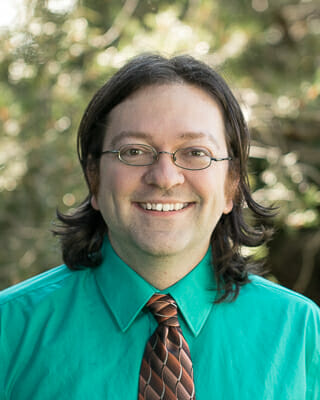
SPOTLIGHT ON INNOVATION SERIES

The US Department of Education has awarded multi-million dollar “First in the World” grants to 24 colleges and universities that are innovating to solve critical challenges with access, recruitment, retention, and student success. At AI, we have interviewed each of the recipients to learn more about the projects these institutions are pursuing, how their approaches are unique, and what other colleges and universities can learn from these new efforts.
Andrea Beach, Western Michigan University’s director of faculty development, is the recipient of a $3.2 million First in the World grant. WMU has announced its intent to use the grant to help develop a “culture of degree completion and success,” and I was excited to learn more about what that meant — in very practical terms.
Building on the Kalamazoo Promise
First, a bit of the background story: In 2005, Kalamazoo, Michigan created the “Kalamazoo Promise,” a fund intended to expand access and student success, and to foster local community and economic development. The fund covers tuition and fees for students graduating from Kalamazoo public schools. “The thought,” Beach explains, “was to remove what is seen as one of the primary barriers to student success in college: finances.”
But the students who are coming to WMU now are still struggling academically — and socially. As many studies have demonstrated, financial need is not one of the only primary barriers to student success, particularly for first-generation students from lower-income backgrounds and from underperforming school districts. Addressing the other, non-financial barriers requires culture change within the institution. “What do we need to change to support students who are coming to us from the backgrounds that the Kalamazoo Promise represents?” Beach and her colleagues are asking. “Many of these students are not as adept at navigating the culture or the processes of the university.”
“We keep asking students to adapt to the university; what are we doing as a university to adapt to the students’ needs? The philosophy of access has grown over the past 20 years among universities; access is a fundamental philosophical underpinning of higher education. But we haven’t changed our thinking about what success means. Access without support isn’t really access.”
Andrea Beach, WMU
To address this, Western Michigan University has brought together a project team — and is using the grant funds to hire a full-time project manager to guide the team (all of the team members are assigned to the project only part-time; they each have other jobs at the institution) and to place student groups in one of two supplemental mentoring programs that the university will pilot and test.
Beach describes these supplemental mentoring programs as the first step in what is intended to be an effort at institution-wide transformation.
Program 1: Connecting Students to Professional Opportunities
The first mentoring strategy involves placing first-generation, Kalamazoo Promise students with mentors from the local business community, whose role is to provide:
- Opportunities for career exploration
- Perspective on the relevancy of course content
- A relationship with a professional who is vested in the student’s academic career
“What does professional work look like? Where am I going after I get this degree? The mentors will help students explore answers to these questions,” Beach notes.
There has been a lot of talk recently about the “skills gap” that employers have noted in college graduates; at AI, we speculate that the kind of mentoring relationships WMU hopes to create may help address both issues — the skills gap, and student persistence and advancement to a career.
Program 2: Embedding Students in Professional Learning Communities and Active Research
The second approach will be to build professional learning communities consisting of students, faculty, staff, and administrators. In these learning communities, students will be coequal participants in active research projects identifying and studying barriers to student success and persistence. The intent will be for students themselves to take an active part in identifying changes that the university can make to better support student success.
The project also takes a university’s key strength — learning and study — and directs that strength toward solving the institution’s own challenges:
- What does the university need to change, in order to be truly inclusive and supportive of all students regardless of their background?
- To quote Tinto, how can the university adapt to make student success the “lynchpin” around which the institution organizes everything it does?
- How can the institution identify its “islands of innovation” that currently operate within separate silos, and bring them together?
“Student success is our outcome, but what we propose for getting there is an institutional transformation project. We’re not talking about adding a learning management system or adding a new program here or a new program there. We’re talking about pulling together all the people who care about this and using the learning community model to study how we can transform the university to improve student success.”
Andrea Beach, WMU
The new learning communities will be built on a model already tested through WMU’s successful “Everybody Counts” learning communities, which have brought together a diversity of students, faculty, and staff to study issues of race and racism, gender, and disability on campus. Beach calls this a “model for breaking silos down,” and stresses the importance of having more than the usual suspects at the table. “We want faculty, academic advisors, we could include dining hall workers…we want people from all levels of the university involved, coming at this challenge of student success.”
And that is where Beach sees the greatest potential for the impact the new initiative could have, not just at WMU but for other institutions, too.
“We will run these learning communities for the several years of the grant. At the end, we hope to say to other regional universities, ‘Here is a model for studying yourself and for changing your own institution without spending millions of dollars.'”
Andrea Beach, WMU
Therein lies the challenge, of course. Implementing mentoring and learning community programs does not need to be expensive, but studying their implementation and effects within a quasi-experimental research design is costly. Fortunately, WMU’s Center for Research on Instructional Change in Postsecondary Education, or CRICPE, of which Beach is a co-director, was developed to take on this kind of research. The center brings together scholars from across all disciplines within the university to pursue funded research projects that require multidisciplinary perspectives and expertise.
At AI, we’re going to be very interested in watching the progress of this initiative over the next several years — and finding out what they learn!
If you have found this article useful, check out these two recorded webinars from Academic Impressions:


